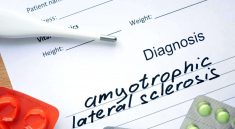When discussing Amyotrophic Lateral Sclerosis (ALS), a common question arises, iIs ALS painful? This progressive neurodegenerative disease affects nerve cells in the brain and spinal cord, leading to muscle weakness and atrophy. However, the experience of pain varies widely among individuals. In this article, we delve into the different aspects of pain in ALS, examining how it manifests and what factors influence its intensity. Join us as we explore the nuanced experiences of pain for those living with ALS, shedding light on this often misunderstood aspect of the disease.
Understanding ALS: What It Is and How It Affects the Body
Amyotrophic lateral sclerosis (ALS), commonly known as Lou Gehrig’s disease, is a progressive neurodegenerative condition that impacts motor neurons in the brain and spinal cord. These neurons are essential for initiating and controlling muscle movement. As ALS progresses, patients experience a gradual decline in muscle strength, leading to muscle weakness, muscle atrophy,, and severe physical disabilities. Initial symptoms often include slight muscle weakness, slurred speech, or muscle cramps, which may seem insignificant initially but gradually worsen over time.
- Motor Neuron Degeneration: In ALS, both upper and lower motor neurons degenerate or die, ceasing to send messages to muscles. Unable to function, the muscles gradually weaken, atrophy, and twitch.
- Wide Range of Symptoms: ALS symptoms vary significantly among patients but commonly include difficulty walking, loss of hand coordination, and difficulties in speaking, swallowing, and breathing.
- Impact on Daily Life: As ALS advances, patients may require assistive devices for mobility or systems to help with breathing, like mechanical ventilators.
- Progression and Severity: The rate of progression can vary, with the median survival time from onset to death being three to five years. However, some patients may live longer, particularly those diagnosed younger.
The Nature of Pain in ALS Patients
The nature of pain in ALS (Amyotrophic Lateral Sclerosis) patients is complex and can vary significantly from person to person. Although ALS is primarily known as a disease that affects motor functions, pain is a prevalent symptom for many individuals diagnosed with the condition.
Types of Pain Experienced
Due to the disease’s effects on the body, ALS patients may experience different types of pain. Muscle cramps and spasms are common, as deteriorating nerves send faulty signals to muscles. Additionally, joint pain can occur due to immobility or abnormal stress on joints and limbs due to muscle weakness.
Secondary Pain Sources
As ALS progresses, secondary sources of pain can develop. These include pain from prolonged immobility, such as pressure sores, and pain adapting to decreased motor functions. Contractures, which are permanent tightening of muscles or joints, can also cause significant discomfort.
Management of Pain
Pain management in ALS is tailored to the individual’s symptoms. It may include medications, physical therapy to enhance mobility and reduce stiffness, and occupational therapy to assist with daily activities and prevent injuries. Regular assessments are crucial as the disease progresses to adapt pain management strategies effectively.
Neuropathic Pain
Some ALS patients experience neuropathic pain, which is directly related to nerve damage. This type of pain is often described as burning, tingling, or shooting pains that conventional painkillers may not easily alleviate. Treatment for neuropathic pain typically involves specific medications like anticonvulsants or antidepressants.
Factors Influencing Pain Perception in ALS

Pain perception in ALS (Amyotrophic Lateral Sclerosis) patients is influenced by a variety of factors that can either exacerbate or mitigate the experience of pain. These factors include physiological and psychological elements, which interact in complex ways.
- Neurological Decline: As ALS progresses, the degeneration of motor neurons not only impairs muscle function but can also affect the nerves’ ability to transmit pain signals accurately. This can alter sensations and potentially heighten pain perception.
- Muscle Weakness and Atrophy: Progressive muscle weakness and atrophy often lead to abnormal body mechanics and posture, putting extra strain on muscles and joints and increasing pain. Furthermore, muscle cramps and spasms, which are common in ALS, also contribute significantly to discomfort.
- Psychological Factors: The psychological impact of living with a progressive, debilitating disease like ALS can significantly affect pain perception. Anxiety, depression, and stress are common among ALS patients and can increase pain sensitivity. Emotional support and psychological counseling can help manage these aspects.
- Physical Activity and Mobility: The level of physical activity and the degree of mobility an ALS patient retains can influence pain. As a healthcare provider advises, regular, gentle exercise can help reduce stiffness and maintain mobility, potentially easing pain.
- Healthcare and Support: The quality and accessibility of healthcare and support services available to an ALS patient play a crucial role in pain management. Effective pain relief strategies, including pharmacological treatments and therapies like physical or occupational therapy, are critical for managing pain.
- Individual Health History: Co-existing conditions like diabetes or cardiovascular disease can complicate ALS symptoms and pain perception. Medications for other conditions can interact with pain management strategies, requiring careful coordination by healthcare professionals.
Knowing these factors is crucial for developing effective pain management strategies in ALS patients. These strategies aim to improve their overall quality of life by addressing the direct and indirect causes of pain.
Common Pain Management Strategies for ALS
Pain management in ALS (Amyotrophic Lateral Sclerosis) patients is critical to improving quality of life and requires a multidisciplinary treatment tailored to individual needs. Here are some common strategies that healthcare providers employ to help manage pain in ALS:
- Medication: Nonsteroidal anti-inflammatory drugs (NSAIDs) can relieve mild to moderate pain. For more severe or neuropathic pain, medications like anticonvulsants (e.g., gabapentin) or antidepressants (e.g., amitriptyline) may be prescribed. Muscle relaxants can also be beneficial in managing muscle cramps and spasticity.
- Physical Therapy: Physical therapists work with ALS patients to maintain as much mobility and comfort as possible. Techniques include stretching exercises to prevent muscle stiffness and contractures and passive range-of-motion exercises to keep joints flexible.
- Occupational Therapy: Occupational therapists assist patients in adapting their environment and activities of daily living to minimize pain and maintain independence. They may recommend special equipment or changes in the home to support safer and more comfortable movement.
- Assistive Devices: Tools like braces or wheelchairs help stabilize the body and alleviate pain associated with maintaining posture or mobility with weakened muscles.
- Palliative Care: As ALS progresses, palliative care becomes more central. This care focuses on relieving symptoms and enjoying better quality of life rather than treating the disease. It includes comprehensive management of physical symptoms, including pain, and addresses emotional, social, and spiritual needs.
- Dietary Changes: Proper nutrition can help maintain overall health and potentially lessen some symptoms that contribute to pain. A dietitian can provide tailored advice to help manage specific issues like cramping.
- Psychological Support: Chronic pain is not only physical but also emotional. Psychological support or counseling can help patients cope with the emotional stress of living with ALS, which can, in turn, help manage the perception of pain.
These strategies collectively aim to manage the various aspects of pain experienced by ALS patients, helping them maintain comfort and dignity throughout their illness.
Physical Therapy and Pain Treatment

Physical therapy plays an important role in alleviating severe pain for patients with ALS (Amyotrophic Lateral Sclerosis), focusing on maintaining as much function and comfort as possible despite the progressive nature of the disease.
- Preservation of Mobility: Physical therapists work with ALS patients to maintain mobility for as long as possible. Exercises tailored to the patient’s ability can help maintain muscle strength and joint flexibility, which is key to reducing stiffness and discomfort that can lead to pain.
- Prevention of Contractures: Physical therapists help prevent contractures, such as the permanent tightening of muscles or joints, through regular stretching and range-of-motion exercises. Contractures can be painful and severely limit movement, so preventing them is a priority in ALS care.
- Posture Management: As muscle weakness progresses, maintaining proper posture becomes challenging. Physical therapists provide guidance on supportive seating and positioning to prevent pain related to poor posture and the strain it places on the body.
- Adaptive Techniques and Equipment: Therapists introduce patients to adaptive equipment such as walkers or wheelchairs, which can assist in maintaining energy levels and minimizing the risk of falls and associated pain. They also teach techniques for performing daily activities to minimize strain and pain.
- Breathing Exercises: As ALS progresses, it can affect the muscles used for breathing, leading to discomfort and pain from respiratory strain. Physical therapists teach breathing exercises that help strengthen respiratory muscles and improve breathing mechanics, which can alleviate discomfort.
- Education and Family Training: Physical therapists also educate patients and their families on how to manage the physical challenges of ALS at home. This education includes safe handling techniques, proper use of assistive devices, and strategies to manage daily activities without exacerbating pain.
By addressing these various aspects, physical therapy helps manage pain in ALS patients, striving to enhance their quality of life and sustain independence for as long as feasible.
Psychological Aspects of Pain in ALS
The clinical characteristics and psychological aspects of pain in ALS (Amyotrophic Lateral Sclerosis) are profound, as the mental and emotional impacts of living with a progressive, debilitating disease can significantly influence a patient’s experience of pain. Here’s how psychological factors play into pain management for ALS patients:
- Mental Health Challenges: Patients with ALS often face significant psychological stress due to the progressive loss of mobility and independence. Anxiety, depression, and feelings of helplessness can exacerbate the perception of pain. It’s essential for pain management strategies to incorporate psychological support to tackle these mental health issues.
- Coping Strategies: Effective psychological interventions, such as cognitive-behavioral therapy (CBT), can teach patients coping strategies to manage the emotional aspects of living with ALS. These strategies can help avoid the impact of stress and anxiety on pain perception.
- Social Support: Social support is vital in managing ALS. Isolation can increase stress and negatively impact mental health, thus worsening pain perception. Regular interaction with family, friends, and support groups can provide emotional relief and practical assistance, helping to lighten the psychological burden of the disease.
- Palliative Care Inclusion: Integrating palliative care early in the treatment process can address pain’s physical and psychological aspects. Palliative care teams are equipped to provide comprehensive support, including mental health services, which are essential for managing the holistic needs of ALS patients.
- Mindfulness and Relaxation Techniques: Techniques such as meditation, mindfulness, and guided imagery can help patients manage pain by reducing stress and enhancing emotional resilience. These practices encourage relaxation and an improved emotional response to ongoing physical challenges.
- Education and Empowerment: Informing patients about their condition and engaging them in the decision-making processes regarding their care can empower them and offer a sense of control, which is beneficial for mental health and can positively influence pain perception.
Addressing the psychological aspects of pain in ALS is as important as managing the various physical pain symptoms. A comprehensive approach that includes mental health care alongside medical treatment can greatly enhance pain management and overall quality of life for ALS patients.
Advancements in Treatment: Hope for Reducing Pain in ALS

The landscape of treatment for ALS (Amyotrophic Lateral Sclerosis) is continuously evolving, with ongoing research and clinical trials aiming to provide new hope for reducing pain and improving the quality of life for those affected by this condition. Here’s a look at some of the advancements in treatment that are offering new hope for managing ALS, particularly in the realm of pain reduction:
Gene Therapy and Molecular Research
Recent advancements in gene therapy and molecular research are opening new avenues for targeted treatments that could potentially slow the progression of ALS and alleviate associated pain. Researchers are exploring ways to modify specific genetic pathways involved in the disease to preserve motor neuron function for longer periods.
Stem Cell Therapy
Stem cell therapy is another area of intense study, with clinical trials investigating the potential of stem cells to regenerate or repair damaged neurons in ALS patients. While still in the experimental stages, this approach holds promise for slowing disease progression and reducing the severity of symptoms, including pain.
Neuromodulation Techniques
Neuromodulation, including transcranial magnetic stimulation (TMS) and spinal cord stimulation, has shown potential in managing neuropathic pain in ALS. These methods help modulate pain signals and have been effective in other neurological conditions, suggesting a possible benefit for ALS patients.
Improved Medication Regimens
The development of more effective medication regimens to manage symptoms associated with ALS, including muscle spasticity and cramps, directly contributes to pain reduction. Medications that better target these symptoms can significantly improve patient comfort.
Enhanced Palliative Care
Advances in palliative care techniques are also crucial in managing ALS. Enhanced approaches to palliative care are focused not just on end-of-life care but are integrated earlier in the disease course to manage symptoms comprehensively, including pain, thus improving overall patient well-being.
Integrative and Holistic Approaches
There is growing recognition of the benefits of integrative medicine, which combines traditional medical treatments with complementary therapies such as acupuncture, massage, and herbal medicine. These therapies can help manage symptoms and improve overall well-being by addressing both physical and psychological aspects of pain.
The ongoing advancements in ALS treatment offer significant hope for patients, potentially leading to better management of pain and other debilitating symptoms. Integrating new technologies, therapies, and holistic approaches continues to enhance the standard of care, providing a brighter outlook for individuals living with this challenging disease.
Exploring whether ALS is painful reveals a multifaceted aspect of the disease, influenced by various factors. Understanding pain management and the role of supportive care is crucial for enhancing the quality of life for those affected. As we make further progress in medical research and therapeutic alternatives, the hope for alleviating pain in ALS grows, offering patients and their families a pathway to manage this challenging condition better.
References
FYI: Pain in ALS | The ALS Association
https://www.als.org/navigating-als/resources/fyi-pain-als
Amyotrophic lateral sclerosis (ALS) – Symptoms and causes
https://www.mayoclinic.org/diseases-conditions/amyotrophic-lateral-sclerosis/symptoms-causes/syc-20354022
Is ALS Painful? Types of Pain and Management Techniques
https://www.verywellhealth.com/is-als-painful-6834643
What doctors wish patients knew about amyotrophic lateral sclerosis
https://www.ama-assn.org/delivering-care/population-care/what-doctors-wish-patients-knew-about-amyotrophic-lateral-sclerosis
Signs and Symptoms of Amyotrophic Lateral Sclerosis
https://www.mda.org/disease/amyotrophic-lateral-sclerosis/signs-and-symptoms





